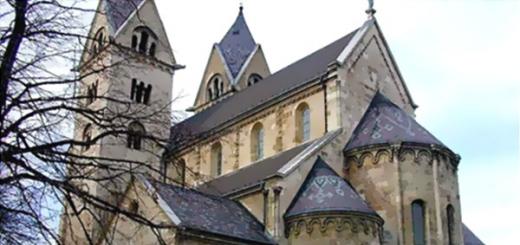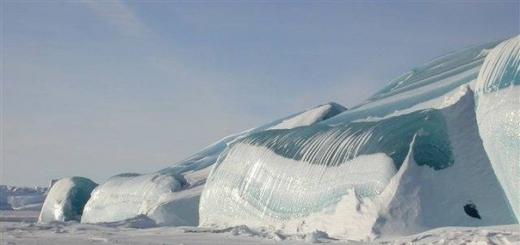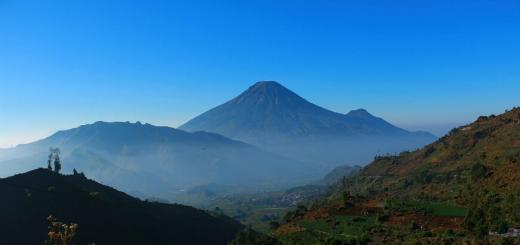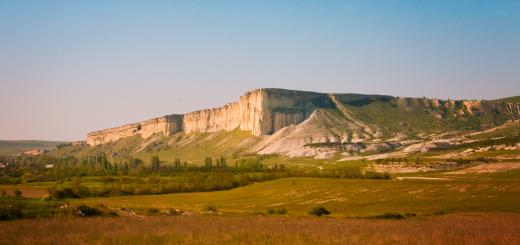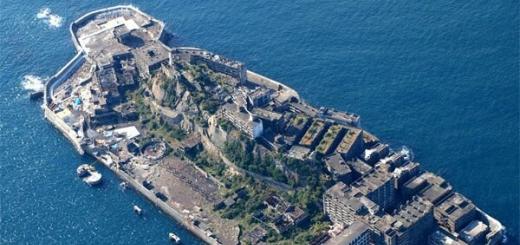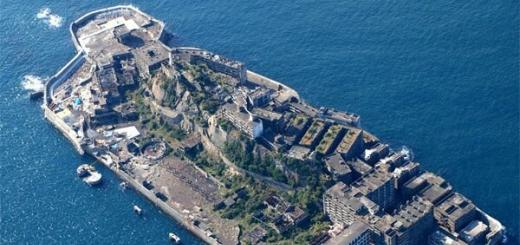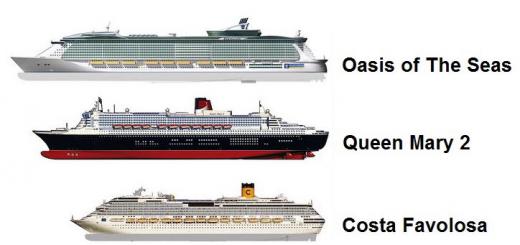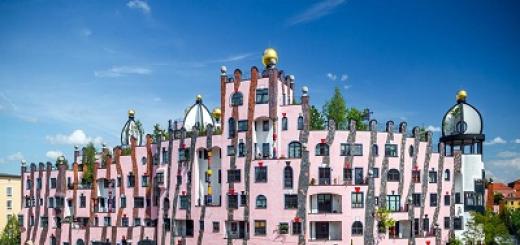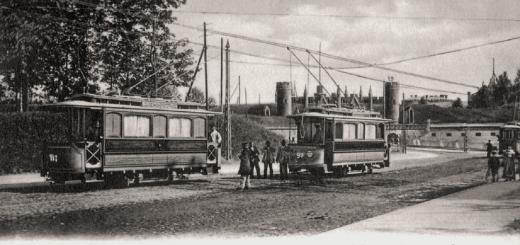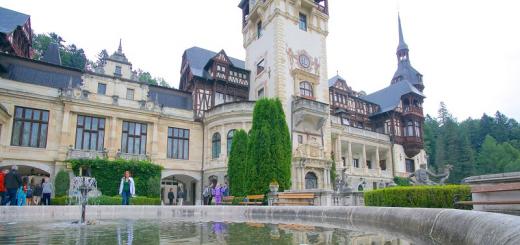Sweden is a great country to visit with many interesting places to visit. Anyone planning a trip to Sweden should find out about its attractions.
Stockholm
Stockholm is the capital of Sweden and also the most populous city among all the Scandinavian countries. It is home to almost a million people. The city is located on 14 islands. Many believe that outwardly it is the most beautiful city in Scandinavia. There you can take photos literally at every turn: from historical and modern colorful houses to beautiful islands and parks right next to the harbor.

A trip to Stockholm will be remembered for a long time: this Scandinavian city is home to a huge number of museums, art exhibition halls, statues, fountains and parks. Tourists tend to visit such interesting places as the Vase Museum, Stockholm Public Library. The subway is also attractive with its gallery art. Stockholm is not a cheap city. But staying here even for a few days is worth the money spent.
Gothenburg
Gothenburg is an amazing city. You should definitely stay in it for at least a few days. During this time, you can discover interesting places and tourist attractions.
It is the second largest city on the west coast of Sweden. It is located about 6 hours from Stockholm. It is also a large city with many tourist attractions. It is definitely worth a visit to anyone who is going to Sweden. It is impossible to list all its interesting places, but the following are especially worth noting:
- large fish market,
- Museum of Martiman,
- Volvo factory,
- 20 islands,
- Liseberg amusement park,
- main boulevard of Gothenburg,
- the original Viking ship at the Gothenburg City Museum,
- Gothenburg Museum of Art,
- house-museum.
And also many, many others. Here you can even visit the Nordkaperen submarine or go to the top of the hill for a panoramic view of the city.
Uppsala
The ancient city, located 70 km from Stockholm and 20 minutes from the airport "Arlanda". Uppsala is rich in unique cultural and historical treasures. The city has managed to maintain its provincial charm, while offering guests a wide variety of shopping, dining and entertainment options.
The Furis River divides Uppsala into two parts: historical (western) and administrative (east). Most of the city is located on the western side. Here you can visit:
- The Cathedral is the main cathedral in the city. It is also the largest church in Scandinavia. Many Swedish kings were buried here.
- Karl Linnaeus's garden, which has a greenhouse.
- Botanical gardens.
- Uppsala Castle. Here you can see works by artists of the 16th century and more modern masters.
Linkoping
Linköping is a much smaller city than Stockholm and Gothenburg. But it has its own unique atmosphere - especially in autumn and winter. At this time, the whole city turns neon and looks just amazing.
The residents of the city themselves call it "the place where ideas become reality." In the 80s of the last century, the city administration decided to create a center for the study of innovations and high technologies on the basis of the local university. This decision gave a serious impetus to the development of the city. On the other hand, it also has a lot of historical sights:
- Linköping Cathedral, built in 1230,
- the town hall, where the church and church schools were located in the Middle Ages,
- city Library,
- "Gamla Linkoping" - the historical part of the city,
- open air museum of the air force.
Big fans of innovative technologies and everything connected with them can visit the world's first Museum of Computers and Servers.
Unusual hotels
Sweden is an amazing country of strange hotels. A tourist can stay overnight in a tree house, sleep inside an ice cave, deep underground in a silver mine, or underwater in a floating hotel. Unfortunately, all of these places are usually very expensive. But if financial possibilities permit, you should definitely try. One of these unusual hotels is the uncivilized Kolarbin hotel:

The ice hotel is also known for its uniqueness. It is being built from December to April, but reservations must be made at least a month before arrival - otherwise, there may simply be no room left.

Viking city Birka
Located 30 km from Stockholm. It is here that you can completely immerse yourself in the atmosphere of Viking life. This medieval town often hosts a variety of themed events.
Tomb of Ales-Stenar made of stones in Ystad
Sweden has its own attraction, which is not inferior to Stonehenge in mystery and popularity. In the small fishing village of Koseberke, located 80 km from Malmö, guests of the country can see the mystical stones called Ales-Stenar. This monument includes 59 vertical boulders that are dug into the ground. If you connect them with one line, then they will form the outline of the ship. Some stones weigh about five tons.
Studies have shown that this structure was erected about 1400 years ago. But practically nothing is known more about these boulders: their true purpose and the origin of the name remain a mystery. Historians believe that these boulders in the past were tombstones, inside which there were burials of noble persons. Another option - the boulders are monuments to sunken ships.
There is a legend that the man buried in Ales Stenar is a figure from Swedish myth: King El the Strong. Most likely, this was one of the most influential Vikings.
Abiskou National Park
At the very Norwegian border, on the edge of Lapland, there is one of the most popular Swedish nature parks among tourists - Abisku. It is open to the public all year round. Many hiking trails start from the Abisko tourist station.

Each of them is equipped with special huts where travelers can relax. Hiking trails are held in high esteem in summer and autumn; in winter - skiing. One of the most popular routes involves climbing Mount Naoya. The most persistent tourists who have managed to climb it will have an amazing view of the stretching natural landscapes.

One of the most popular destinations for northern lights hunters is Aurora Sky Station. It is also located in the Abisku National Park. If you're lucky, you can see the northern lights there. Its incredible beauty attracts tourists from all over the world. Usually observation of the miracle of nature opens from November 17th. Getting to the station is usually by train or car. You can also choose an airplane, but the price will be at least twice as expensive.
Located in Northern Europe, and occupies the east and south of Scandinavia - the largest peninsula in this part of the world. In terms of territory, the country is "not of the last" - the fifth place among other European countries. It borders with Norway in the west, with Finland in the northeast, and the lands in the east and south are washed by the waters of the Baltic; in the south it borders on Denmark by sea. In the Baltic Sea, there are two large islands belonging to Sweden: Gotland, a paradise for archaeologists and treasure hunters, and Öland, which has served as a hunting ground for the royal family for many centuries.
Swedish climate - moderation and tranquility
Although Sweden is a northern country, the climate in most of its territory is temperate. In the northern and western regions, it is still colder: the air from the Atlantic is trapped by the mountains that form the legendary fjords. Winter is considered long, and rightly so: in March there is almost no smell in spring, but, in our opinion, there is no severe frost, even in January - the thermometer rarely drops below -18 ° C. In the south and southwest, there is generally a small minus, but there is a lot of snow almost everywhere, with the exception of the flat regions of the north. Summer in Sweden is not hot, but cool and warm - 20-22 ° C, although there is never enough rain.
When to go to Sweden? Of course, in winter or early spring, if you like winter sports and entertainment; or in summer, when the water in the lakes is clear, and in green forests there are a lot of mushrooms and berries - the ecology in Sweden is "at its best".
City sights are also easier to see in summer: of course, in spring and autumn there are fewer tourists in cities, but the weather is not so favorable either.
Some sights of Swedish cities
Sweden is rich in sights - both natural, cultural and historical. But a large part of them are concentrated in Stockholm - the capital of the country, one of the most elegant cities in the world. The "Old Town", or Gamla Stan, is considered the main value of the capital, one of the largest and best preserved historical centers - it has hardly changed over several centuries: from here in the 13th century Stockholm began. Stortorget Square, surrounded by houses of different colors - the center of Gamla Stan. Most of the houses have been here for 300-400 years and they look great. It is worth paying attention to the old building of the Stock Exchange, which now houses a museum, a large library and the Academy of Sciences.

The Royal Palace was under construction at the end of the 17th century, but then he was not lucky: the barely completed building burned down, and everything had to be rebuilt. The palace that exists today has more than 600 rooms, and it is officially in operation - it is the residence of the royal family. At the moment, of all the operating royal palaces in the world, it is considered the largest.
An interesting attraction is the Iron Boy, a small metal figurine only 15 cm high; in Sweden he is very loved, although there is no history connected with him. It's just that the sculptor depicted him in such a way that everyone wants to stroke the sitting iron kid on the head, and the locals also dress him in different outfits, especially in winter; it is also customary to leave small coins nearby - for good luck. In Gamla Stan, there is another attraction that Swedes are proud of - the monument to St. George slaying the Dragon. A bronze copy was installed on the square, and in the church of St. Nicholas - the original of the sculpture.

Many monuments were damaged during the war, but by the end of the 20th century they were restored, and now Gamla Stan, where you can again feel the atmosphere of the Middle Ages, attracts the attention of many tourists.
In Gothenburg, the first largest after Stockholm, the Opera House is famous - an original modern building built in the last decade of the 20th century. Both the stage and the auditorium are equipped with "the latest technology"; not only operas are staged here, but also ballet, music and dance shows, and musicals. Gothenburg is a beautiful and rich city, and it is interesting not only for culture and history, but also for wonderful landscapes: the Swedes themselves consider its surroundings to be the most beautiful places in the country. Both adults and children can relax "to the fullest" in the Liseberg amusement and amusement park: it is the largest not only in Sweden, but throughout Scandinavia, and is also included in the top ten amusement parks in the world.
All Swedish cities are attractive in their own way, and they cannot be briefly described. But Malmö is considered the third largest, quite ancient and colorful: it dates back to the 13th century, and in the 15th century it was a large trade center. Now it is a transport and industrial center with many modern buildings and structures. Among them, a 54-storey building with the name "Turning Torso", 190 m high, is considered a spectacular attraction - as it grows upward, the building twists clockwise all the time. Among the old buildings, the 16th century fortress Malmöhus and the church of St. Peter, built of bricks in the Gothic style, stand out. In the same city there is one of the largest museums in Europe - the Malmö Art Museum.
And many more interesting things
There are many interesting places in Sweden besides medieval and modern urban wonders. For example, the construction of Ales Stenar - "Swedish Stonehenge", no less mysterious, but less famous than the English monument. 59 huge stones are lined up and dug into the ground on the coast in the form of a drakkar, although this place is considered both a burial ground and an ancient calendar; versions are different, but it is believed that the structure is at least 1400 years old. There is a sign: if you go around the entire structure at sunset, touching each stone, you can absorb the energy of this sacred place.

And in the city of Yukkasjärvi you can relax in an “extreme” snow-ice hotel, which is not the only one of its kind: there are such establishments in Norway, Finland, Canada. There are few rooms there - only four, and there are always guests. Almost everything is made of ice and ice blocks - even the glasses in the bar, but the beds are still not ice-cold. You can rent a room for a day - at a temperature of -7 ° C it is better not to stay for a long time. This building is built anew every year - in December, and with a new design - and melts in April; it also hosts original exhibitions of ice sculptures.

A little about the nature of Sweden
The beautiful and clean nature of Sweden deserves a special description. As in Finland, it is strictly guarded, but there are no prohibitions on visiting natural lands: anyone can safely enter even private property. Like the Finns, Swedes carefully protect their natural values, and an attitude like ours - rubbish, fires, broken trees - is simply unimaginable for them.
It is forbidden to ride cars and motorcycles “in nature” - you can walk or ride a bicycle, and even then not everywhere: in private estates, dirt roads cannot be damaged. You can swim and go boating in any body of water, except for reserves with rare animals; in many lakes you can fish without a license - with a fishing rod; flowers, mushrooms and berries can also be picked if they are not listed in the Red Book. Even dogs should not be released from the leash at certain times of the year, so as not to disturb wild animals during the mating season.
So, it is better to go to Sweden from May to August, but many are interested in both the Christmas holidays and the New Year - the time of fun mass festivities, bright parties and fireworks.
Well, what can I tell you or where to start a story about our nature in the south of Sweden, or, as our region is called, Skane.
Skane / Skane / is a very fertile land, black earth, besides, there has always been a war and a struggle for it between Denmark, under which Skane was almost 400 years old and a little less under also Sweden. For the fertile lands of Skåne, there was a long and exhausting struggle, and on its territory there were battles between the Danes and Swedes, as well as a partisan war between the end and the Swedes. Since Skane was Danish for so long, and then became Swedish, traditions, language, cuisine, and architecture all intertwined in a bright pattern that is very distinctive from the whole of Sweden. Even the flag took away a little bit of color from both Danish and Swedish: the Danish flag is red with a white cross, the Swedish flag is bright blue with a yellow cross, and the Konsky flag is red with a yellow cross! Also the language, although it seems to be spoken in Swedish, and the pronunciation and many words are from Danish. When people from central or northern Sweden come to us, they very often cannot understand what the ends are talking about!
The nature of southern Sweden is amazingly diverse!
To the south, where there are such large cities for Sweden as Lund, Malmö, Ystad, Treleborg - nature resembles more a steppe with soft hills and small forests. There, in the cities, palm trees are planted along the streets along the sea to create a truly southern feel! And this is understandable, because summer in Sweden is short and flies by very quickly! It is beautiful there in summer: the sea is warm and shallow, huge sandy shores with dunes and heather, and the atmosphere of southern European cities complement an almost idyllistic picture, but in autumn and winter ... humidity and rains - this is a typical autumn, and in winter snow is added, with the same piercing wind and icing of all roads, it feels like you are driving on a skating rink.
Well, a little higher, in the south-west, where I live geographically, in fact, the landscape changes very noticeably: hills with decorated granite stones, small rivers winding through the fields, lakes and forests consisting of birches, spruce, oak and beech. I live in a small commune Ostorp (as a regional center in Russia - 14,000 thousand people) at the foot of the South Upland / S; derasen, where there are many forests of beech, oak, spruce and birch trees. The hill itself resembles a little small Switzerland: granite cliffs, deeply descending, and such steep and high hills that you have to climb them, sometimes almost like climbers. Many millions of years ago, a ridge of volcanoes passed here, stretching to the south, and now it has survived in its collapsed, but obvious form, practically one with a visible outline of a round volcano's throat and a lake in it, which bears the mystical name Odin. Odin is the most powerful Deity in Norse mythology, like Zeus. The water in this lake, which is about 20 meters deep, is as energetic and extraordinary as, for example, Svetloyar, in Nizhny Novgorod. Swimming here is very unusual: the water seems to be glowing and shimmering with light from the inside or from the depths and air bubbles still rise from the bottom, which means the Earth is still breathing in this place!
And go down from the "mountains" of the hill, so immediately open spaces with fields, farms, woods and new "mountains" are visible in the distance - the Goland Upland, behind which lies the very famous town of Bostad - there are held international summer tennis competitions.
The sea surrounds us from almost all directions: in the south and southeast - the Baltic Sea, in the south-west - the Kategat strait between Helsingborg - Sweden and Helsinjør-Denmark, and the whole strait is called Oresund, where the sea is warm, due to the flowing Gulf Stream, which , in turn, gives us a fairly mild climate in which roses, magnolias, hydrangeas, walnuts and many other exotic plants and trees grow beautifully. The shores are wide and sandy with dunes, where you can hide in the sand from the wind, with heather and a huge wild rose, and a little higher, towards Bostad / B; stad /, the shores suddenly become steep and steep and resemble granite giants associated in my eyes, with Scotland.
Yes, I forgot to tell you that after the Kategat and the high Cape Kulaberg, which is considered the highest place on the southern and southwestern coasts, a large bay opens up - Shelderviken or Engelholm Bay, because it lies right across the city of Engelholm, which means Angelic hills. The beaches here are considered the best in Sweden and therefore tourists come here from everywhere: Germany, Holland, Denmark and, of course, Sweden, and immediately behind the beach there are forests, which, for some reason, are called Siberian here (from Siberia, they are dense, wild and stretching for several kilometers). It was in this forest that the flying saucer landed, 63 years ago. A small monument was erected to her by a person who saw her and communicated telepathically with aliens! This man's name was Yosta Karlsson / G; sta Carlsson / and it was he who built a small monument to the flying saucer, which has been here for many years, in memory of the event. This place, of course, is very unique: a huge space that burned out when the saucer landed , but over the years it has already grown decently, but this space is still visible and the energy here is also surprisingly strong and positive - here you can sit and improve your health or just recharge yourself with energy.
How many dolmens are there in Scandinavia / Denmark and Sweden? Believe it or not - 4,500 !!! And most of them are scattered in Skane, in the south of Sweden, where I live. And how powerful are these structures of dolmens, of which there are actually several types here: above ground, similar to Gelendzhik dolmens and underground with passages to them and a hill above them. There is probably no need to say much about the fact that there is an unusually strong energy, as it is quite obvious from the history of dolmens. There, too, you can be charged with Energy and in your Meditations you can simply fly away to other dimensions or see interesting things. A separate book can be written only about dolmens in the south of Sweden !!! But, it may be another time.
There are also picturesque and energetically powerful Viking burials. You can find them everywhere in Sweden, even in deep forests. As a rule, they are recognized by the stones that are standing and deeply embedded in the Earth, located in a spiral. The central stone of this spiral always belonged to the head of this Viking clan, and then other family members of this clan or tribe were buried. The stones can appear as pyramids or simply be smooth but powerful boulders. In Ostorp, in the city park, next to the windmill, you can find several such spiral burials under powerful oak trees, which, of course, later grew on this place. When you stand in the center of this spiral, you can recharge your Energy System, or more simply, your health, with these powerful Streams of Energies that simply pour vertically from the center of these points. And if you do not really believe this or want to check the veracity of these statements, then please come to us in Sweden! Take a pendulum or, as we call it, a pendel and check it out !!! The pendulum will simply go off scale, running in a circle and clockwise! And how many such burials I myself have seen in Småland forests (central Sweden), collecting blueberries and mushrooms.
Along the E6 highway, between Helsingborg and Landskrona, towards Malmö - to the south, at the top of the observation mountain, from which the island of Ven, where the famous astronomer and scientist Tycho Brahe was born and lived, is also visible, as well as Denmark - Helsingor, the coast and then Copenhagen, then on the right on this hill you can see untouched mounds - the burials of the noble Vikings. And the Swedes do not rush to tear apart the Earth and gnaw into the past, they respect the Earth and do not bother it for any reason. After all, there is already all the evidence and all kinds of relics from history, and they also spend the money of their budget very wisely and frugally! This is probably why they still have a relatively stable economy, despite all kinds of crises! Well, if someone does decide to excavate these and other burial mounds, well, well, let them try for their own money, but I don't think the residents will allow them to do this.
Here we have such an extraordinary nature! And with nature reserves, and with extraordinary places of power, and just with mushrooms, blackberries, raspberries, rabbits, pheasants, deer and ... very nice, hardworking people who need to be understood and known, because the Scandinavian mentality and temperament are completely different than , say Slavic, Russian or Ukrainian. People are very restrained, cautious, shy and never impose themselves with anything, even somewhere proud, one might say, but if they recognize you and love you, then they will become friends for life and for life too.
Well, I wanted to briefly write for you about the nature of our land or region, which I selflessly fell in love with, but it turned out to be a whole essay ...
I will be glad if this gives YOU some idea of her - Skane!
Welcome to us if you want to see it all for yourself and love it too !!
A recent poll showed that nearly a third of Swedes consider ecology and pollution to be one of their most pressing issues. For comparison: only 7% of residents of the European Union as a whole, according to the same statistics, are concerned about these problems.
Overproduction and constant growth in consumption is another problem that raises concerns in many countries, as industrial production entails environmental pollution and waste of energy. At the household level, it is popular among Swedes not to buy unnecessary things, trying, where possible, not to create unnecessary demand for certain “non-ecological” goods. It is quite common, for example, to buy used furniture, clothing and appliances in order, albeit on a small scale, to prevent overproduction.
Practically all industrial enterprises in Sweden are constantly introducing innovative solutions to improve efficiency and at the same time reduce energy consumption. The government also supports industrialists in these endeavors. In 2005, it introduced tax breaks for energy-intensive industries in exchange for their development of measures to reduce energy consumption. The government's goal is to make energy use 20% more efficient by 2020 compared to 2008.
Every municipality (there are 290 of them in Sweden) has an energy advisor to whom people can turn for help and guidance. Advice is provided on issues such as the use of low-energy lighting fixtures and the transition to greener heating systems.
Who's Who in the Swedish Eco-World
SWEDISH ENVIRONMENTAL AGENCY
Submits proposals to the government on environmental policy and legislation and ensures that solutions based on this policy are implemented. The agency also deals with outdoor recreation and hunting.
STOCKHOLM SUSTAINABLE DEVELOPMENT CENTER
International Center for Interdisciplinary Research on Organizing the Management of Socio-Ecological Systems with an emphasis on survival - the ability to cope with change and continue development.
VINNOVA
A governmental organization founded in 2001 to develop Sweden's innovative capacity for sustainable growth. Vinnova invests around SEK 2.7 billion (EUR 286 million) annually in various programs.
SWEDISH ENERGY AGENCY
A government organization that promotes the use of renewable energies, improved technologies, smarter energy consumption and climate change mitigation.
If you want to save the planet - remove the trash
More than 99% of waste in Sweden is recycled and reused in one way or another - a phenomenon already dubbed the "Swedish recycling revolution". No other country in the world has yet managed to come so close to the dream of waste-free production and clean water and air. How did the Swedes manage to achieve this?
Considering that, on average, every inhabitant of the planet produces several tons of household waste per year, it is easy to imagine what the Earth will turn into at least in a few years, if no measures are taken. Sweden is among the countries that have succeeded in recycling and recycling waste. Only 0.7% of household waste in Sweden is disposed of by burial in special landfills, while in the EU as a whole, this figure is as much as 34%.
Every Swedish family has several containers with stickers in the apartment and in every house. On one - glass, on the other - cardboard, on the third - metal, on the fourth - plastic, on the fifth - for newspapers. Separate container for food waste. The corresponding waste is collected in these containers and then transported to the waste collection station. The importance of sorting waste is so entrenched in the minds of the Swedes that many do it automatically. Paints, nail polish, old batteries, light bulbs and electrical appliances are hazardous waste that is disposed of in designated areas. Municipalities are responsible for organizing waste collection and disposal, and they are also responsible for ensuring that their residents are aware of the rules and possibilities for disposal.
Innovation at the service of the environment
Another way Sweden is trying to show other countries the way to transform the planet into an ecological paradise is through innovative environmental solutions. The Swedish government has already invested over 400 million kroons in research and development in the field of ecology and environmental protection. Among the best known developments are biofuels, smart grids, and carbon capture and storage. In 2013, research and development spending amounted to 3.3% of GDP, the fourth highest in the OECD.
Concern for the purity of the air forced the Swedes to look for ways to replace combustible fuel and gasoline. Alternative fuel sources that have become widespread in Sweden are biofuels from food and organic waste, electricity and ethanol. Many Swedish companies, as well as almost all government agencies, are replacing the car fleet, getting rid of cars on combustible fuels and switching to environmentally friendly electric vehicles. Almost all city and intercity buses have switched to biofuels and ethanol. These are just some of the measures Sweden is using to remove combustible gases from circulation and help clean the air of harmful emissions. The objectives of reducing greenhouse gas emissions by 40% by 2020 compared to 1990 and the complete disposal of the car fleet from fossil fuels by 2030 are among the priorities for the environmental policy of Sweden.
From the history of the issue
Sweden earned its reputation as a pioneer in the field of ecology in the 1960s and 70s. Thus, Sweden became the first country to establish the Environmental Protection Agency in 1967. It was in Sweden in 1972 that the first UN conference on the environment was held, which resulted in the creation of the United Nations Environment Program (UNEP) - the leading international body on the environment to this day.
Sweden was also one of the first states to sign and ratify the Kyoto Protocol, an international agreement on what to do in the face of climate change.
RENEWABLE ENERGY
Sweden has the largest share of renewable energy sources in the EU - in 2017 it was 54.5%, mainly hydropower and biofuels. According to the forecasts of the Swedish Energy Department, this figure could rise to 55% by 2020.
ATOMIC ENERGY
Nuclear energy accounts for about 40% of Sweden's electricity production. There are ten reactors in Sweden. Their future, however, has not yet been determined, since some reactors will soon expire, and the pros and cons of building new ones remain a hot topic for discussion.
ARCTIC FOCUS
Global climate change has made the Arctic one of the most vulnerable regions in the world. Over the past 100 years, the average temperature in the region has risen twice as much as the global average. Changes are affecting not only local biodiversity and polar ice, but the planet as a whole due to rising ocean levels. As part of the Arctic region and a member of the intergovernmental Arctic Council, Sweden is committed to raising public awareness of climate change in the Arctic in international climate negotiations. www.arctic-council.org
WATER FOR LIFE
Along with climate change, one of the main global environmental problems is sea pollution and loss of marine habitat. Since 1990, the share of oxidized lakes in Sweden has decreased from 17% to 10%, and the downward trend continues. In addition, Sweden is actively working to convince the EU and the countries of the Baltic region to improve the ecology of the Baltic Sea. Actions include water management and fisheries conservation projects.
Excellent cities in ecology
According to UN statistics, by 2050, two-thirds of the world's population will live in cities. That is why the problem of overpopulation of cities and their growth raises concerns among ecologists of all countries. Here Sweden could also serve as a good example, since the rational use of natural resources has played a decisive role in the planning of many Swedish cities.
Stockholm
In the mid-1990s. Stockholm City Hall decided to transform the former industrial area of Hammarby into an example of ecological urban planning. The newly built residential area has smart grids, affordable and environmentally friendly public transport, bike paths and parking, waste collection and disposal.
Malmo
A similar transformation of an industrial zone into a residential area took place in Malmö. Today Västra Hamnen is a zero-carbon district with a thermal energy storage system. The water is stored during the summer, then pumped in with wind power to heat homes during the colder months. The water is then reused to cool buildings in the summer.
Road trip Saransk - Finland - Sweden - Norway. Part 4. Nature and roads in Norway
Norway has the most expensive gasoline in the world. To fill the tank of his Lada-Largus station wagon, Denis Tyurkin paid three times more than at home. Isn't that why there are so many electric cars in that country? About stunningly beautiful views, endless tunnels and toll roads - in the photo report.
At gas stations in Norway, as a rule, only two types of fuel are sold: 95th gasoline and diesel fuel. Moreover, a liter of the latter is always cheaper by one crown. Interestingly, the price changes (and sometimes significantly!) Depending on the time of day. Many gas stations work without operators, accepting cards. In terms of rubles, a liter of the 95th reached 130 rubles! But the high cost of fossil fuels is hardly forcing local residents to buy electric cars. Rather, it is their eco-conscious awareness. Especially popular there are "Tesla" ("Model X" - to a lesser extent, "Model Es" - to a greater extent) and almost unknown in the Russian Federation BMW i3. Their "habitat" is not always limited to large cities and suburbs, often electric cars can be seen in villages. Think about it: more than half of new car sales in Norway in 2017 were from electric vehicles and hybrids. And the Model X crossover, which sold almost 4,800 units, costing more than 8 million rubles in rubles, took the fourth place among new cars. Just a second: There are only 5.3 million people living in Norway.
 © Denis Tyurkin
© Denis Tyurkin  © Denis Tyurkin
© Denis Tyurkin  © Denis Tyurkin
© Denis Tyurkin If now they ask me what Norway is associated with, I will say: with automobile tunnels. A significant part of the country is occupied by the famous fjords, which can be crossed by ferry (also an example of an amazing organization of transport, they go by the minute and cost a penny). And ferries in recent years are gradually being replaced by bridges and tunnels. In the latter, even whole roundabouts are being built, can you imagine ?! Almost all underground roads have artificial lighting and do not have ... a ban on overtaking. How do you like that? Near Oslo - just a whole anthill of tunnels. And God forbid you miss the desired turn (and underground, as you know, the navigator does not catch the satellite signal), the next one can only be in a dozen kilometers!
I had a chance to drive through the world's longest automobile tunnel - Loerdalsky, which is located near Bergen and was built in 2000 for 113 million dollars. Its length is 24.5 km. Resting places are located after a certain distance. For some reason, it is believed that drivers get tired with such monotonous driving. And some are even afraid. And for this, such parking lots are highlighted in different colors. On Norwegian roads, the speed limit is 80 km / h, and in tunnels, as a rule, 70. In front of many there are barriers that block traffic in the event of some kind of emergency inside or during road works. Having traveled about 1,500 km in Norway, I only stood in line in front of the tunnel twice, the biggest one - half an hour. At the same time, information boards warned about road works long before the site, suggesting detour options.
 © Denis Tyurkin
© Denis Tyurkin This is how the entrance to the tunnel on the Hardanger Bridge in Norway looks like. It is one of the longest suspension bridges in the world. The length of the only span is 1,310 m. In addition to the sidewalk, there is also a bike path. The fare on it is 150 Norwegian kroner, or 1,159 rubles 73 kopecks at the exchange rate on July 27. Yes, many roads and similar structures in Norway are paid. If earlier there were barriers and payment points at the entrance, now there are only video cameras that read the license plate number. Before the trip, I took care of this issue and registered on a special Norwegian site, entering my data and data of the car. I did not bind a bank card (although there was such an option, and about 3,500 rubles would be immediately debited from it as an advance payment). A month after the trip, a letter came by e-mail. Like, you have money. It turned out that I dashed through this country almost that prepaid amount, and the Hardanger bridge became the most expensive on my route. In the personal account on the site, every place where the camera took a picture of me is painted (pictures are attached). Interestingly, the operator of this system is a British company. By the way, on the trip to St. Petersburg and back on paid sites, I paid about 2,000 rubles. And of the complex structures there was only a beautiful section of the western high-speed diameter in St. Petersburg ...
 © Denis Tyurkin
© Denis Tyurkin This is how cars go about on some Norwegian roads. On the left you see a typical motorhome that Europeans love to travel in. In one place I saw a parking lot of such motorhomes (about 50!), And it looked like a camp of bison.
 © Denis Tyurkin
© Denis Tyurkin  © Denis Tyurkin
© Denis Tyurkin If on the road in Norway you saw a beautiful place or some kind of attraction, feel free to slow down. Rest assured, there will be a pocket or even a parking lot with a toilet where you can stop and take pictures. But be prepared for the gazes of passing locals too. Are you throwing trash in the wrong place? Have you left the fire? The infrastructure of each more or less significant attraction is developed at an incredible level. The wooden building in the second photo is an emergency point in the mountains halfway to Preikestolen. It opens automatically when you call the specified phone number.
Not far from this beautiful place, for the first time in the whole trip, I stopped in the wrong place. An excellent free English-language navigator maps.me (made by the forces of Belarusians, by the way) led along the gravel road, which stretched into the mountains, and then rested against a closed barrier. I had to turn around and make a 100-kilometer detour. It turned out that the path initially laid by the navigator was really the shortest, but it ran through a difficult section that is highly dependent on nature. Even in early June, the snow did not melt there. And in this, Norway is like Russia: in a short section of the road you can see winter, spring and summer, as well as different geographic zones. All thanks to the mountains. But needless to say that wherever you go, the roads will be perfect?
 © Denis Tyurkin
© Denis Tyurkin This is the famous Preacher's Plateau (Preikestolen) - a rock protruding above the fjord. In the photo, she is impressive and mesmerizing. That's why I went there. But since this point was one of the last in the Norwegian route, and during the trip I saw so many amazing things, the Preacher plateau was remembered only by people. The one-way walking route there takes 4.1 km, and during this time I was shocked by three things. First: almost every tourist greets you (incredible good nature and openness, of course, are characteristic of Europeans, but it is one thing when you communicate with a hotel neighbor, and another thing is when you greet a person in the mountains whom you will never see again). Second: adults take small children on a difficult hike. Even babies. They are dragged in a box behind their backs, similar to those where the bear in the Russian fairy tale carried pies with Masha. And even girls are dragging. Third: even old people and even completely overweight people go on a hike. This should be motivation and fortitude. And the path to the plateau is not a flat asphalt path in the park. Yes, somewhere these are stones hewn by special workers, but somewhere - cobblestones at a cliff and long ascents.
 © Denis Tyurkin
© Denis Tyurkin It turns out that Norway is full of waterfalls! Of course, most of them are temporary: they disappear in summer, when all the snow has melted from the tops of the mountains, but some are so powerful that they fill the road with spray.


